August 15, 2022
Tudor Mountain Honey Harvest Under Way
This weekend we harvested honey from one of our hives. Several guests have asked us about the process. Earlier in the summer, we placed a “super” on top of our hive. The super is a small box. It sits on top of a “queen excluder” so that no eggs will be laid in the super. When all the frames are covered with honey comb capped in white wax, it is time to harvest.
We don our protective gear and give the bees some gentle puffs from our smoker. The smoke keeps them calm by interfering with their sense of smell. They can’t detect the alarm pheromones being released and thus will not aggressively defend their hive against us. We take out each honey-laden frame, gently brush off the bees, and place it in a covered box. Once we have collected all the frames, it is time for extraction.
Honey Extraction
We extract the honey on our screened porch so that we keep the stickiness confined to one area, and so that the bees cannot reach us! The first stop is to use a scratcher to remove the wax capping from the cells. We then scrape the honey and wax into a fine-mesh sieve atop a collection bucket. Once the honey has been filtered once, we do a second filtration through cheese cloth and then it is on to bottling!
This year’s honey is a beautiful gold amber color and we can’t wait to see how the Buckhorn Inn chefs use it! We will clean the beeswax and then use it to make candles. More on that process later.
We are careful to only take the extra honey. Our bees need adequate stores to get them through the winter.
In celebration of our harvest, we are offering this simple summer cocktail recipe. Cheers!
The Bee’s Knees
2 ounces gin
2 tablespoons honey
2 tablespoons fresh lime juice
Combine the ingredients in a cocktail shaker filled with ice. Shake until chilled. Strain into a glass. Makes one cocktail.
April 11, 2022
Diary of a Mad Chick Mom
I grew up on a farm, so intellectuallyI knew that young chickens can be high maintenance and grow up into messy adults. But when Jack suggested we get chickens, all I could seem to think of was cute little balls of fluff.
So we journeyed to the Smoky Mountain Farmers Co-op to select our little flock. There are seemingly endless varieties of chicks. http://Www.starmilling.com We chose three French Marans (black) and three Wellsummers (brown). We named them Quiche, Omelet, Benedict, Scrambled, Poached and Hazel. Why didn’t Hazel get an egg-dish for a name? Because she quickly set herself apart as you will soon understand.
The Chicks Come Home
On the drive home I held the box of chicks on my lap. They were all cheeping contentedly, except for Hazel, who complained loudly the entire trip. We had a cozy brooder set up for them in our garden shed with soft bedding, a heater, water and chick feed. The minute I set them in their new home, five of the chicks began exploring. The sixth chick, Hazel, began flying at the other chicks, trying to peck their eyes out. To my horror, I watched the other chicks try to hide behind Omelet, who had a large, bleeding gash beneath one eye, as Hazel flung herself at them again and again.
At about that time our poultry mentors, Jonathan and Morgan, arrived to see our new birds. None of their chicks had ever been set on destruction like Hazel seemingly was. They promptly dubbed her the Murder Chicken.
I couldn’t let Hazel blind my entire flock so I did the only thing I could think of—I put her into solitary confinement. Her cell was a cardboard box with bedding, food and water. I put it near the heater so she could stay warm. Hazel was very unhappy and kept flinging herself at the walls of her jail. I assumed she would soon calm down. So we left the brooder. And Jack left for a business trip to Chicago leaving me in charge of our little chicks. I did some research and found that chicks sometimes mistake the eyes of other chicks for bugs and try to peck them. Thankfully, they seem to grow out of this phase quickly.
The next morning Hazel was still disconsolate. She had not calmed down. By the amount of bedding in her water, it seemed as though she had been throwing herself at the walls all night long. I cautiously returned her to the general population. I watched for a long time, and she did not attack any of her brooder mates. Perhaps everything was fine and dandy in Chick World? It was not.
Chick Spa Setup for Hazel
When I checked on them in the afternoon, I noticed something odd about Hazel’s profile. Again I turned to the internet and found that stress can cause a condition that the English call “Pasty Bum”. Basically stress upsets their little digestive tracts and makes the chick’s droppings pasty. The dropping then clog the chick’s elimination vent. Without care, they will die within a few days. Oh dear.
I read about caring for this condition. I didn’t like what I read, so I read some more. Finally I realized there was nothing to do but follow the recommended protocol. I held Hazel’s little bottom under a gentle stream of warm water and used a soft cloth to clean her backside. I dried her with a fluffy towel. And then I used my hair dryer set on low to dry her fluff. It takes a surprising long time to dry a chick, so I had plenty of time to think. My thoughts ran along the lines of “I used to be a CEO of a $40 million organization. I used to attend galas and cocktail parties. And now I am spending my evening blow drying a chick’s bottom.”
Apparently this is not a one and done treatment. So Hazel and I developed a routine. When I walked into the shed I could almost hear her groan. She would try to evade me, but once caught would quietly submit to my ministrations. Day two involved a sitz bath in one of my grandmother’s berry bowls. By day three I was able to clean her with a wet cloth and apply the tiniest bit of Crisco to her vent with a cotton swab.
After a week of daily cleanings, Hazel was finally back to normal. And Jack was back from Chicago. I was eager to show him how much the chicks had grown. He looked at them and said “Now that we are good at raising chickens, maybe we should get some goats.” ???????!!!!!!!!!!
January 18, 2022
Planning the Buckhorn Inn Vegetable Garden 2022
As I write this, I am engaged in one of
my favorite activities—planning next season’s vegetable garden! The brightly colored seed catalogs have begun arriving, tempting me to order old favorites and experiment with new varieties.
My first step in deciding what to grow is to consult with the Buckhorn Inn chefs. Chef Frank provides key input on herbs that compliment his dishes and on vegetables he can showcase in soups and side dishes. Chef Bob is a gardener himself, and so we coordinate our efforts. Bob is well-known for the luscious heirloom tomato varieties he grows—in fact my mouth is watering just thinking about his lovely summer omelets! We try to grow herbs and veggies that have the biggest impact in the Buckhorn kitchen. We don’t want to repeat the mistake I made when Jack and I married and planted our first vegetable garden together. I was perusing the seed catalog and asked Jack if he thought we should grow parsnips. Thinking I must like them, Jack replied in the affirmative. Thinking he must like them, I ordered the seeds. We have never to this day grown anything that produced as well as those parsnips. We harvested a bushel basket from our small garden. As it turned out, neither of us cared for parsnips! Our friends and neighbors were the recipients of our garden’s parsnips bounty.
Potential New Finds for the Vegetable Garden
As I leaf through the new Burpee catalog, here are some finds that are most intriguing. http://Www.burpee.com. `
Mocha Swirl Hybrid Sweet Pepper—they ripen from green and white to a rich chocolate-red. The compact plants would be perfect for our raised bed garden. The Golden Egg Hybrid Summer Squash promises succulent flavor from the golden-yellow zucchini. `Everleaf Thai Towers basil is container-friendly and grows up to 3 feet tall. Kentucky Blue Pole Beans always do well for us. Last year we also grew asparagus beans. The 18” long pods have a delicious nutty flavor. Kale is popular at the Inn for garden greens omelets, soups, and vegetable sautées. We likely will grow a variety again this year. Perhaps Dazzling Blue, Red Russian, and Tuscan kale. We are saving space for some lettuce, so you can pick a few leaves as you go by to feed Bubble and Squeak! Of course we will grow okra. It is an ornamental plant, and we love Chef Frank’s fried okra as an accompaniment to a southern fish with remoulade sauce dish! We had best success with Go Big, which produces flavorful dark-green 7” long pods.
In our veranda her pots we typically grow basil, chives, cilantro, mint, parsley, rosemary, and sage. This year we may also grow borage for their edible flowers and lemon verbena to flavor fish dishes.
Decisions, decisions! When you visit, please let us know what you are planning to grow in your garden!
January 10, 2022
Snow at Buckhorn Inn? Yes!!!
Have you seen Buckhorn Inn in the snow? It is a magical sight. Just imagine walking the nature trail as snow crunches under your boots. The quiet beauty is overwhelming. Then you return to your cottage, warm yourself in front of the fire, and venture out again for dinner at the Inn.
The Best Time to See Snow
Our elevation (about 1,280) can get as much as nine inches of snow a year. While it is very rare, we occasionally have gotten snow in late October and in early April. According to the National Park Service, snow is most likely in January and in February. While the weather may warm and it may melt rapidly in town, you will still be able to see the fluffy white stuff in the higher elevations. In fact, Newfound Gap (at 5,049 in elevation) can get as much as 69 inches of snowfall each year. Nearly every trail will feature beautiful winter views, but some of the best are in the higher elevations, like Chimney Tops and Alum Cave trail. The Gatlinburg CVB provides information on all things fun and snowy! http://Www.gatlinburg.com
Be Prepared
Please be aware that our curving mountain roads can become slick and hazardous during and after snowstorms. If it is a heavy snowfall, the Great Smoky Mountains National Park may close its entrances. However, the entrances are usually closed to car traffic only. We are close enough for you to walk to the Greenbrier entrance and enjoy a snowy hike. All local businesses are concerned for the safety of their employees. If employees are unable to safely drive to work, service may be slower than usual or some businesses may be closed. Our area thanks you for your patience!
Winter is a lovely time to enjoy the Buckhorn Inn and our surrounding area. And if you are lucky, you will enjoy a bit of snow!
January 25, 2021
To-may-to or To-mah-to: Thinking Tomatoes for the Garden
It may be January, but the garden catalogs are full of photos of ripe, lush, delicious tomatoes! We are deciding which varieties to grow in the Buckhorn Inn gardens this summer. Looking at all the types of tomatoes got us wondering about this garden staple.
Tomatoes are actually the berries of the plant Solanum lycopersicum. Food historians believe that the species originated in South and Central America. Tomatoes were first cultivated for food by the Aztecs of Mexico. The Spanish encountered the tomato when they conquered the Aztec Empire. They brought the tomato back to Europe. The popularity of the fruit spread to European colonies worldwide in the 16th century.
The tomato is very versatile and can be used raw in salads or cooked for sauces and soups. Tomato juice is a popular beverage. Even green tomatoes are delicious breaded and fried. They are also used in salsa and gazpacho. I recently learned that tomatoes are best kept unwashed at room temperature. In the refrigerator they quickly lose their flavor.
Tomatoes Are Health Powerhouses
A tomato is only 22 calories, but is full of nutrients with a variety of health benefits. One tomato provides about 40% of the recommended daily amount of vitamin C. It also supplies vitamin A, vitamin K, and potassium. Their red color comes from the antioxidant lycopene which is tied to heart benefits and may support vision. And finally the liquid and fiber in the tomato may boost digestive health. http://www.health.com
New Jersey selected the tomato as their state vegetable. Arkansas was more determined to be botanically correct and named the South Arkansas Vine Ripe Pink Tomato both its state fruit and its state vegetable! Tomato juice became the official drink of Ohio in 1965.
Be sure to watch this space for the final decisions on what we will be planting for the Buckhorn Inn kitchen!
September 21, 2020
Appreciating Petrichor In Any Season
Are you familiar with petrichor? This is the earthy smell produced when rain falls. The word comes from the Greek petros, stone, and ichor, the fluid that flows in the veins of the gods in mythology. Scientists speculate that humans enjoy the scent of rain because our ancestors may have relied on rainy weather for survival.
Surprisingly, this common smell was not given a name until a scientific paper written in 1964. The authors described how the smell comes from an oil exuded by plants in dry weather. The oil is absorbed by clay-based soils. When it rains, the oil is released into the air along with another compound, geosmin. Geosmin is a byproduct of certain bacteria and is released from wet soil.
Scientists from the Massachusetts Institute of Technology used high-speed cameras in 2015 to record how smells move in the air. When a raindrop lands on a porous surface, air from the pores forms small bubbles. These bubbles release aerosols which carry the scent. Petrichor is more common after light rains because raindrops that move more slowly produce more aerosols.
If the rain is a heavy one, the scent can travel downwind and alert people that rain is on the way. Farmers often talk about smelling rain in the air.
Petrichor Described Poetically
Scientist T.L. Phipson described the phenomena in somewhat more poetic terms in 1865. His notes refer to “the fragrance emitted by thousands of flowers . . .” that were “absorbed into the pores of the soil” and only released by rain.
This poem by Jayde E is entitled Petrichor.
The scent of rain on dry Earth.
Churning like seawater on a stormy day.
Rising from the ground like bluebonnets on a summer evening.
Petrichor is a delight.
Wafting about beneath soft grey skies.
Traveling on the cool breeze like fairy dust in the wind.
The scent of nature.
As fresh and invigorating as a thing could be.
A promise of new life.
A promise of new days.
A promise of more nights. http://www.powerpoetry.org
The next time you visit Buckhorn Inn on a rainy day, we invite you to sit on one of the porches and savor the petrichor!
August 3, 2020
Pittman Center Has Become A Bee City!
Our community of Pittman Center has joined communities across the country to call attention to an important issue. Affiliates of Bee City USA are working to protect pollinators. So far 111 cities have signed up to raise awareness, establish and enhance habitats, and celebrate the efforts of volunteer leaders.
Honey bees and other pollinators are facing threats at increasing rates. According to Bee City USA http://www.beecityusa.org one of every three bites of food that we eat is thanks to insect pollination. In fact, 90% of all plants and trees rely on pollinators for the survival of their species. That is why we must be concerned with bees disappearing because of loss of habitat, diseases and parasites, and inappropriate pesticide use. Some experts estimate that U.S. honey bee populations are declining at an annual rate of as much as 44%.
Pittman Center Approves Resolution
In May 2020 the town of Pittman Center approved a resolution naming the town an affiliate of Bee City USA. The town’s Tree Board will oversee the Bee City USA program. The town will host at least one educational event or pollinator habitat planting each year to showcase the community’s commitment. There also are plans to create or expand a pollinator-friendly habitat on public and private land. The Tree Board also will create and adopt an integrated pest management plan. This plan will be designed to prevent pest problems, reduce pesticide use, and expand the use of non-chemical pest management methods.
At the Buckhorn Inn, we are delighted with this new program. This is the second summer for our honey bee hives. We report that Queens Violet and Catherine and their minions are healthy and happy. You can watch them at work in our vegetable and flower gardens. When the nectar is flowing they are especially busy in St. Cordelia’s garden. We hope you have a chance to watch them at work.
July 20, 2020
Bees Beard to Beat the Heat
One of our guests pointed to our honeybees clustered on the outside of the hive and said it looked like a “beard”. They wondered why the bees would do this. We have an answer!
“Bearding” is the term which refers to bees accumulating at the front of the hive. They appear calm and fan their wings in unison. They are likely to do this on hot and humid days. By clustering outside they provide more space inside the hive to keep the temperature and humidity within acceptable ranges. Raising brood requires temperatures between 90 and 97 degrees F. They remove their own body heat from the hive to lower the temperature. They also use their wings to push cooler air into the entrance, lowering the temperature even more. The proper humidity is necessary for nectar to evaporate and become honey.
Bee keepers sometimes confuse bearding bees with those getting ready to swarm. But if it is a hot and humid day, chances are good that they are merely bearding. Bearding bees also face the same direction as they fan. This helps cool down the temperature of the hive.
Healthy Bees Beard
According to Kelley Bees http://www.kelleybees.com/blog Bearding is a sign of a strong bee colony that is in good health. It is an indication that the hive contains a good number of bees and that they are preparing for winter by keeping the honey at the correct temperature.
Bees may beard for weeks during the hottest part of the summer. The workers are very skilled at temperature control. Worker bees may also spread water on the rims of cells to set up cooling by evaporation. They can create air currents by fanning their wings. And they adjust the temperature by expanding and contracting the size of the cluster.
We help the bees by providing a source of fresh, clean water. A hive of bees can use as much as a liter of water in a day! We also have painted the hives white so that the sunlight will be reflected, not absorbed.
We are fascinated by our honey bees and are glad that our guests are interested as well!
March 30, 2020
The Lure of the Spring Vegetable Garden
Like many of you, we have been itching to get into our vegetable garden. Our raised beds have been calling to us! We already have transplanted a few plants and put in some early spring seeds. We hope that by the time these vegetables are ready to harvest, you will be dining with us at Buckhorn Inn!
Vegetable Transplants
We transplanted some Redarling brussels sprouts plants. The Burpee catalog http://www.burpee.com describes them as “marvels of flavor, serenely balancing bite and mild sweetness”. The purple-red buttons will appear in our menus steamed, broiled, or roasted.
Seeds in the Vegetable Garden
We sowed a lettuce blend this year. We will be growing six varieties of loose-leaf and crisphead lettuce: Lolla Rosa, Royal Oak Leaf, Black Seeded Simpson, Little Caesar, Matchless Butterhead, and Salad Bowl. These varieties are slower to bolt when the weather turns hot. The various colors and textures are sure to make beautiful salads for our dinner guests.
The Prizm Hybrid kale will offer a rich and sweet flavor for salads when young, then add a nutty flavor to soups when more mature.
Do you like okra? We do too! This year we planted organic Red Velvet okra, The 4-5′ tall plants will have red stems and will produce scarlet-red pods. We can’t wait to use these tender pods in soups and stews.
This year we are trying Pusa Rudhira Red carrots. This variety is very high in beta-carotene and lycopene. So it is nutritious as well as beautiful and delicious! This carrot was created to provide healthy and hardy vegetables for India’s subsistence farmers. http://www.rareseeds.com
Pole beans have been strong producers in our beds. This year we are growing green Kentucky Blues, yellow Monte Gustos, and purple heirloom Trionfo Violetto.
Our Oregon Sugar P0d II snow peas will become favorities. This variety stays compact, an important quality for raised bed gardening.
We planted a few hills of Country Gentleman sweet corn. This is a shoepeg type corn. Therefore the kernels will be in a zigzag pattern rather than in rows. This variety is touted to be one of the best heirloom sweet corns. We love sweet, milky, tender white corn!
Please let us know about your garden plans! We love to talk veggies.



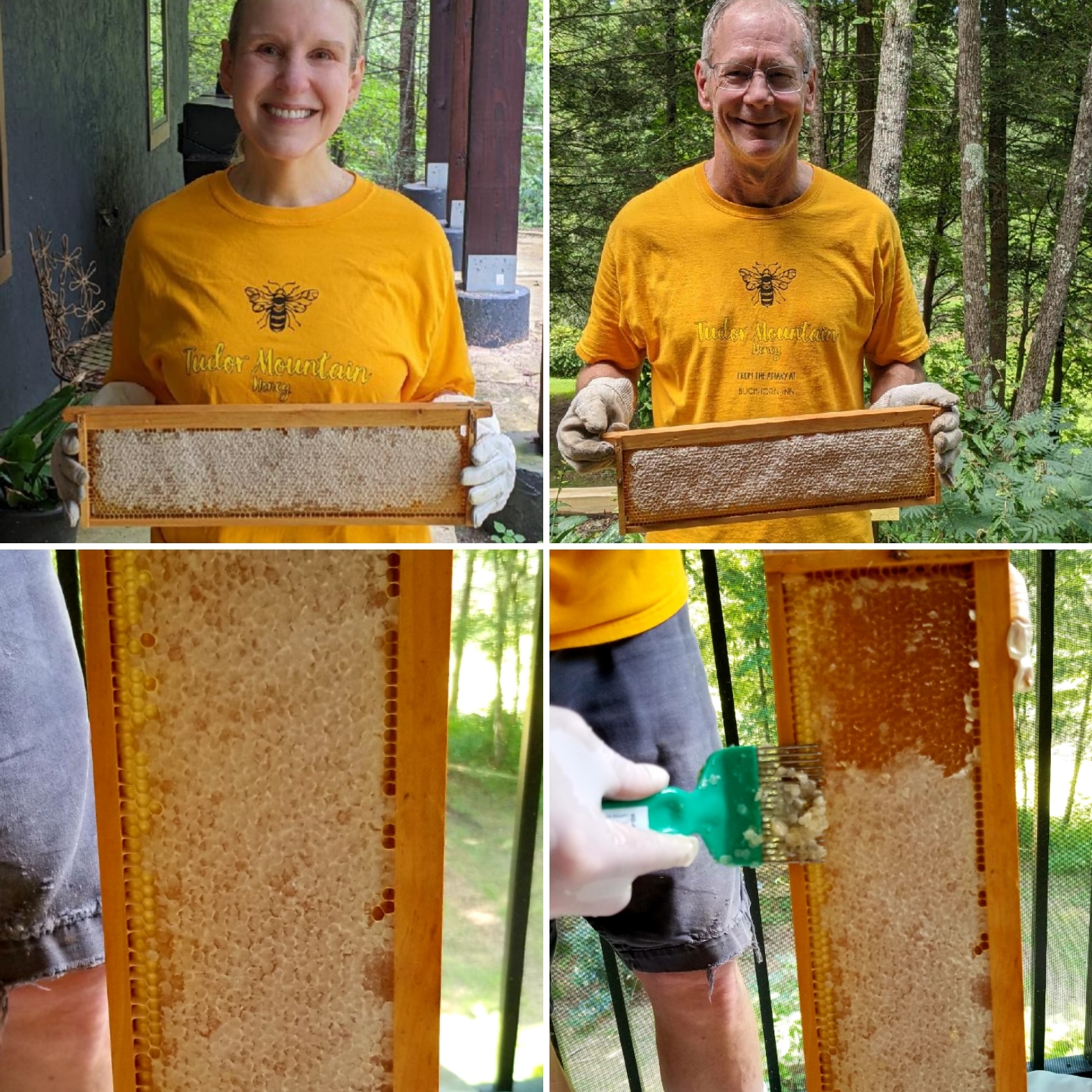
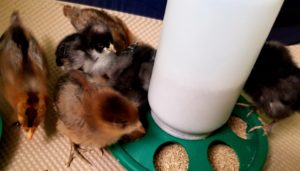
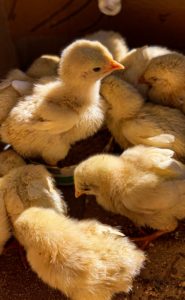


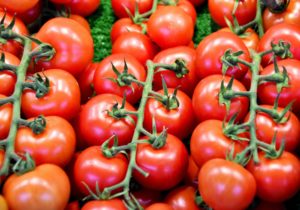

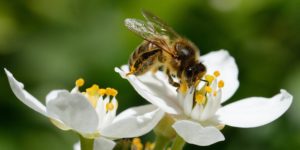
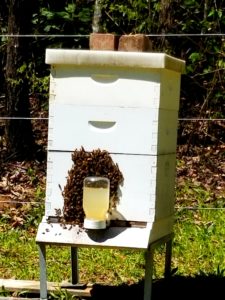


Gatlinburg Weather
Click for weather forecast